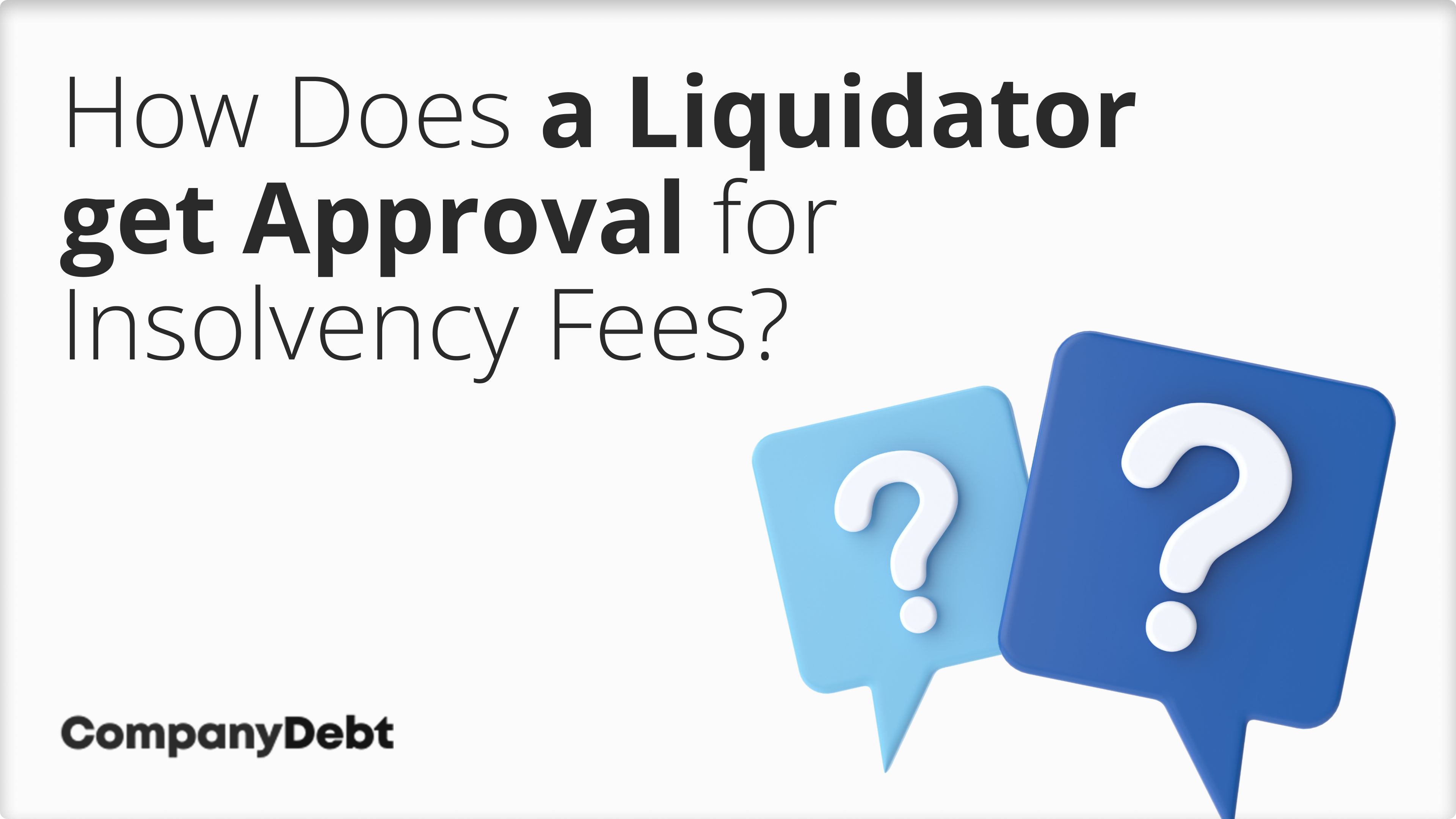
How Does a Liquidator get Approval for Insolvency Fees?
The role of the liquidator is to dispose of the insolvent company’s assets and distribute the proceeds fairly amongst creditors once the fees, charges and additional expenses of the liquidation have been deducted. The liquidator also investigates the company’s affairs and agrees with creditor claims against the company.
The liquidator’s fees are approximately £4,000 for a CVL process. However, this figure is dependent on the complexity of the case.
The basis for the liquidator’s fees can be a percentage of the total value of the assets that are sold or a charge relating to the time spent by the liquidator and his or her staff during the liquidation process or a set amount. A combination of all three may also be used to fix the remuneration.

Shareholder Approval
At the shareholders’ meeting, a number of resolutions are taken by the directors, including to wind up the company, nominate a liquidator and fix the liquidation fees. At this time, the liquidator makes certain that the basis for fixing the liquidation fees is fully understood by everyone. He or she may provide supporting documents for further clarification. One of the key objectives of the meeting is to reach an agreement that the fees proposed by the liquidator are a fair and reasonable reflection of the work that needs to be done to wind up the company.
Creditor Approval
The day after the shareholders’ meeting, directors have seven days to deliver a notice to creditors, with the details of the meeting process. The notice requests that creditors vote on proposals or resolutions taken during the shareholders’ meeting, such as placing the company into a CVL, the nominated liquidator and the liquidation fees. Creditors can agree or disagree with the proposals by casting their votes via one of the official ‘qualifying’ or decision-making methods. Creditors can complete and return the voting form via correspondence or email or they can complete the voting form, using an electronic system, such as Survey Monkey. They can attend a virtual meeting, which is typically a conference call or video conferencing platform, such as Google Hangouts, for example.
A system of ‘deemed consent’ has been introduced where creditors are now ‘deemed to have consented’ to a decision or resolution if 10% of creditors (by value) have not objected to it. In other words, if objections are not received by the ‘decision date’, creditors are ‘deemed to have consented’ to the decision or resolution. In line with the new rules, deemed consent cannot be used to approve the liquidator’s fees. In the scenario where the deemed consent process has been used to approve the liquidator’s appointment, another qualifying procedure will be required to vote on fees, such as correspondence or email, electronic voting or a virtual meeting.
Physical Meetings
Creditors can object to a virtual meeting in favour of a physical, face-to-face meeting to vote on the liquidation fees if they can meet the 10/10/10 rule. This means that 10% of creditors (in value) or 10 individual creditors, or 10% of creditors (in number) must support the request for the meeting to go ahead.
Need Advice?
If insolvency is looming over your business, the best course of action is to contact an insolvency practitioner sooner rather than later for a better chance of rescuing the business.
For more guidance on a director-led voluntary liquidation, please call 0800 074 6757 or email info@companydebt.com for free and confidential advice from one of our professional advisers.










